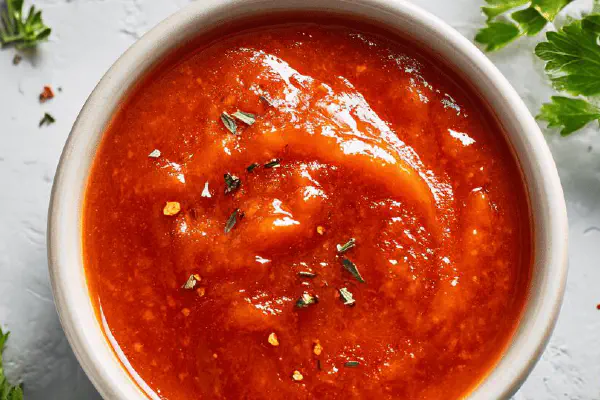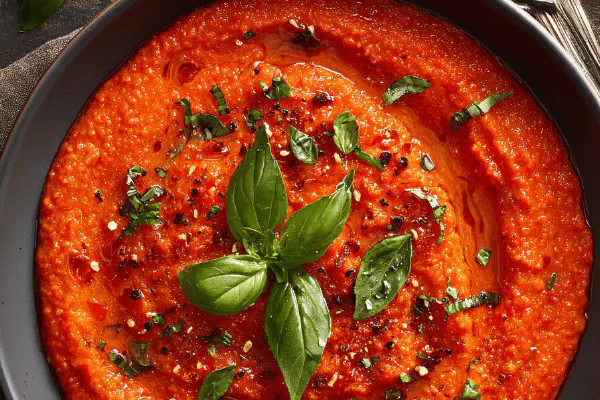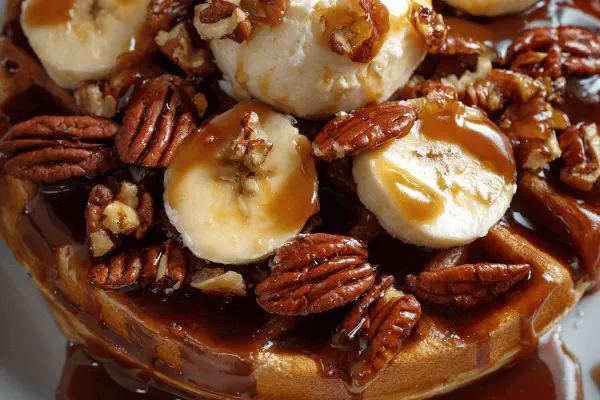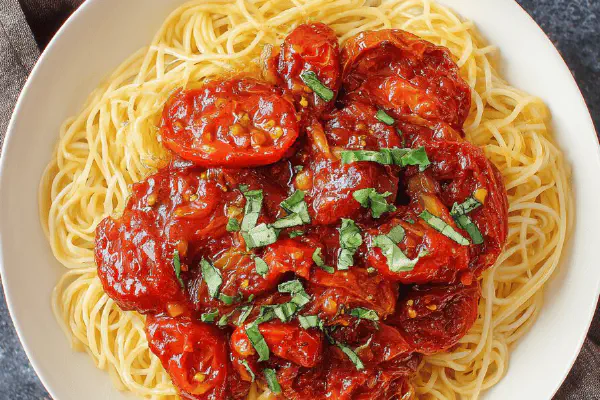Quick Strawberry Syrup Remix
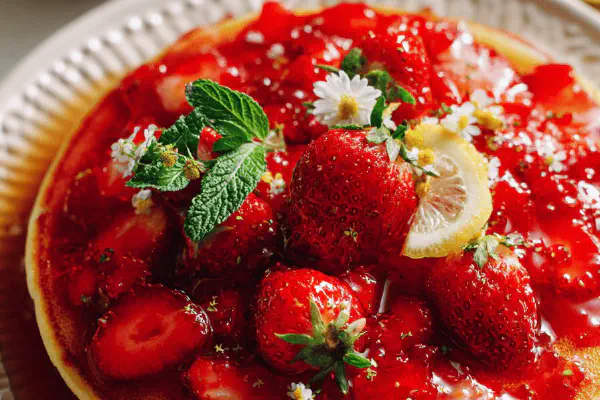
By Emma
Certified Culinary Professional
Ingredients
- 900 ml fresh strawberries coarsely chopped
- 350 ml raw honey or maple syrup
- 2 tbsp freshly squeezed lemon juice
- 5 ml lemon zest finely grated
About the ingredients
Method
- Combine chopped strawberries with honey, lemon juice, and zest in a heatproof bowl. Stir gently, releasing some juices with the back of a spoon but avoid turning into a puree.
- Cover the bowl tightly with cling film. Position it atop a simmering pot of water ensuring the bowl’s bottom does not touch water directly to prevent scorching. Let steam-infuse for roughly 20-25 minutes, stirring gently every 10 minutes. Berries soften and release aromas—listen for soft bubbling sounds and look for deepened color.
- Once the steam bath stage is done, carefully remove bowl (use mitts, steam hot). Remove wrap, stir to homogenize syrup consistency. Strain through a fine-mesh sieve or cheesecloth pressing gently to extract syrup—reserve pulp separately (good for waffles, stirred into yogurt).
- Let syrup cool at room temp, then transfer to refrigerator uncovered for 5-10 minutes to lose surface condensation and thicken further. Store cold. Thickness increases as syrup chills; if too thick, stir in a spoonful of water.
- Test syrup by dripping a little between fingers—sticky but fluid like runny honey. Smell: fresh, bright with subtle lemony zing, no burnt sugar notes. Adjust sweetness or acidity next time accordingly.
Cooking tips
Chef's notes
- 💡 Chop berries coarse to retain texture after steaming; finer mash risks puree, loses mild bitterness. Use honey or maple syrup as sweetener but note maple adds smoky aroma. Stir every 10 mins during bain-marie to avoid hot spots, ensure even softness and aroma release. Watch color deepen; signals juice and aroma extraction. Pulp keeps for pancakes or yogurt, strains out seeds for fluid syrup. Adjust lemon juice carefully to avoid sharp tartness overpowering natural berry notes.
- 💡 Cover bowl tightly with cling film for steam trapping—prevents drying and aroma loss. Bain-marie keeps temperature low, uniform; avoids scorching bottom that burnt my first batch. Use glass or stainless steel heatproof bowl—plastic risks melting, metal conducts too fast direct heating. Steam bubbling sound changes subtly, listen closely. No direct water contact under bowl. Timing depends on berry softness and scent blooming, roughly 20-25 minutes but smell and gentle bubbling guide best.
- 💡 After steaming, remove with mitts, extract syrup pressing gently through fine sieve or cheesecloth. Avoid heavy pressing to prevent pectin release that makes syrup cloudy, gummy. Keep strained pulp separately; adds texture and fiber when used as topping or in recipes. Cooling syrup uncovered at room temp stops condensation forming and watering down surface. Transfer to fridge uncovered for 5-10 minutes thickens syrup’s mouthfeel and pourability. Too thick? Add small spoonful of water, stir gently until desired fluidity achieved.
- 💡 Experiment with substitutes but note effects: honey cuts bitterness, floral, health benefits. Maple syrup for smoky twist but less floral, can dominate citrus notes. Granulated sugar possible but reduce quantity by 25%, use low simmer to avoid burnt edges. Adjust lemon zest finely grated—not too much or it tastes bitter. Zest enhances brightness, cuts syrup’s heaviness. Save pulp for creative reuse—grainy seeds cause grit or bitterness if not strained properly. Avoid plastic bowls near heat; metal or glass maintain steady heat safer for delicate fruit.
- 💡 Test syrup by dripping small amount between fingers; fluid like runny honey but sticky. Smell bright, fresh lemon zing mixed with softened berry scent—no burnt sugar odor. Watch bubbling changes during bain-marie stage for softness cue. No direct boiling heat or caramelizing. Adjust sweetness next time based on aroma and texture clues. Cool syrup thickens more; warm thins it for easy pouring. Keep container lid off in fridge to prevent condensation dilution. Store cold for longevity; works well over ice cream, cocktails or baked goods.
Common questions
Why steam bath instead of direct heat?
Avoid scorch at bottom. Indirect heat keeps fruit soft, juices intact. Direct heat scorches edges, ruins aroma. Steam bath = gentle, even heat. Keeps aromas fresh, no burnt sugar notes. Timing flexible but watch color and smell.
Can I replace honey with sugar?
Yes, but reduce sugar amount by 25 percent to avoid over sweetness. Use low simmer to prevent caramelization. Honey adds floral note, health benefits lost. Maple syrup another alternative but adds smoky aroma. Sugar changes final texture and aroma balance.
What causes gritty or bitter syrup?
Seeds not strained well cause grit or harsh bitter bursts. Press sieve gently, avoid squeezing pectin out that thickens syrup cloudily. Strain through fine mesh or cheesecloth. Keep pulp aside to retain fiber but not seeds. Immediate straining after heating prevents seed bitterness from infusing.
How best to store syrup?
Refrigerate uncovered 5-10 mins first to stop condensation then closed. Keep cold extends freshness; can last a week easily. Some keep it in fridge with no lid to avoid moisture dilution but risks surface drying. Use glass or plastic container but avoid metal lids which can react over time.
